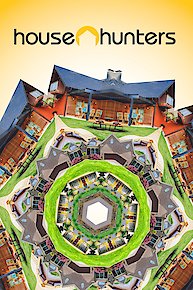Red Hot and Green is a home and garden show from HGTV that revolves around sustainable living and eco-friendliness. The show has a focus on newer technologies, futuristic designs, and eco-friendly solutions to everyday problems in home and garden spaces. With a broad range from building and construction to gardening and landscaping, the show is perfect for anyone interested in reducing their carbon footprint.
The show is hosted by Briana and Erik, a married couple that has a passion for sustainable living. They are on a mission to educate the public on the benefits of an eco-friendly lifestyle, and how they can utilize various modern technologies to achieve their goals. The couple is shown traveling across the United States, visiting homeowners that have already made the switch to sustainable living. They showcase the various upgrades that these homeowners have made to live a more eco-friendly lifestyle.
Each episode of Red Hot and Green showcases a different theme that varies from episode to episode. For instance, some episodes center around energy efficiency, where Briana and Erik visit homeowners that have installed technologies, such as solar panels or wind turbines, to reduce their energy bills. Some episodes focus on water conservation, while others show how to cultivate a food garden using composting and other eco-friendly solutions.
After they identify the theme, they then visit the homes of the people that have taken that approach. They take a tour of the house and highlight the eco-friendly upgrades that they have made. During the process, Briana and Erik often ask the homeowner about the challenges they faced during the transition and how they overcame them. This information is invaluable to the viewers and helps viewers who are interested in transitioning easier.
During the show, there are several elements that can be considered educational. Expert guests who specialize in various aspects of sustainable living are often featured. These guests are usually professionals in specific niches (energy efficiency, home building, etc.) who share their experience and knowledge on reducing carbon footprints. Their experience helps the viewers learn how to implement similar strategies in their homes.
In addition to physical aspects of the home, the show focuses on broader social and environmental topics. The hosts often share their knowledge on how sustainable living can contribute to economic and social change, and how ideas such as conscious consumerism or local farming can help to reduce our ecological impact. Moreover, the show highlights how conscious choices can encourage individuals to embrace and promote values that are not only environment-friendly, but also fulfill a much greater sense of fulfillment and happiness.
The show is beautifully produced, and the hostsâ passion for the subject is infectious. Coupled with a stunning setting, the show offers insights into ways in which a more sustainable lifestyle can benefit both the homeowner's wallet and the greater community, both environmentally and economically. There is no hint of divisive politics or judgment of those who are yet to make the switch.
In conclusion, Red Hot and Green is an informative and engaging show that offers viewers fantastic insights into how an eco-friendly lifestyle can be achieved. It offers practical solutions and shares lived experience to inspire and educate those who want to make positive change in their homes and gardens. The show is perfect for those who are already environmentally-conscious, as well as those who are looking to make the transition. Red Hot and Green offers us all an opportunity to leave a lighter footprint on the planet.















 MyFreeDIRECTV is a new free premium TV experience.
MyFreeDIRECTV is a new free premium TV experience.
 Enjoy a curated selection of popular free live channels and On Demand library.
Enjoy a curated selection of popular free live channels and On Demand library.
 Try the DIRECTV experience - All you need is the DIRECTV app.
Try the DIRECTV experience - All you need is the DIRECTV app.

































